Home
Ferrari 2024 Le Mans: Two in a Row
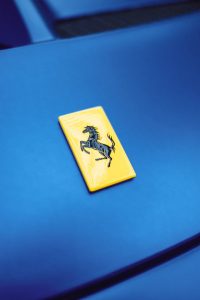
That’s back-to-back for Ferrari at Lemans, having won last year and backing it up again just over the past weekend for 2024. If you look back over the list of winners at Le Mans, there have been numerous times that car marques have won twice in a row, even four or five times in a row, sometimes with the same driver. Only 14 seconds behind the Ferrari, Toyota was nipping at its heels the whole day, er… and night. It’s great to have a red car with the prancing horse back on top, Toyota having won 5 consecutive years running from 2018–2022.
So what makes the Ferrari 499P or Toyota GR010 Hybrid race car so fast? Great aerodynamics, strong reliability, excellent brakes, and epic performance. The Ferrari 499P uses a mid-to-rear internal combustion engine (ICE), as well as a front-mounted electric motor. These two powerplants combine to develop a maximum output of 500 kW to comply with the Le Mans race regulations of 29 Oct 2022. The front-mounted electric motor, rated at 200 kW, draws its necessary electric power from a Formula 1-derived 900 V battery that recharges during deceleration and braking. It provides power at speeds over 190 km/h. The hybrid power is linked and fed though to a seven-speed sequential transmission. The car was clocked just shy of 350 km/h, and the 0–100 km/h time takes about as much time as it does to complete this sentence!

Le Mans 2024 was the 92nd 24-Hour Le Mans endurance race, and the fourth round of the 2024 FIA World Endurance Championship. The race began on 15th June 2024 and ended 16th June 2024 at the Circuit de la Sarthe track in Le Mans, France, which, in its present configuration, is 13.626 km long, making it one of the longest circuits in the world. What makes this such an exciting event is that 85% of the lap time is spent on full throttle. This, of course, puts immense pressure on the engine and the drivetrain’s components, and only cars that can withstand this torrid test of reliability can make it through the race and perhaps even win. Brakes and suspension components also take a lot of abuse, as the race cars must slow from well over 300 km/h to around 100 km/h as quickly and as efficiently as possible to make it round the sharp corner at the village of Mulsanne.
Constant overnight rain created long periods where drivers were forced to drive with caution in the difficult conditions, thus having to limit their top speed at times. Ferrari were able to overcome the wet conditions at Le Mans 2024 to beat Toyota and win the 24-hour race, yet it was another Ferrari 499P that took out third place as well. It was as much a shout-out to the incredible skill of the drivers as it was to the marque. Porsche took out fourth position, coming just over a second behind Ferrari’s number 51 car, while Toyota’s number eight car finished an impressive fifth.

Campervan Conversions And #VanLife
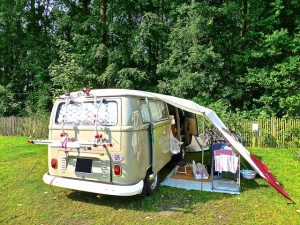
It’s perfectly possible to sleep in the back of most cars in a pinch, as long as the rear seats fold flat and you have a reasonable bit of padding underneath you and a pillow (speaking from experience here). However, I wouldn’t want to do it for more than a night or so in a row without very good reason. If you like to stay in campgrounds or in the middle of nowhere but don’t want to lug around a caravan, then possibly the answer is to build your own campervan, giving you more versatile motoring as well as the ability to take secure accommodation with you – and making it easier to find a park when you stop in to pick up supplies.
If you want to convert a vehicle to a campervan, you need to start with the right one. Vans are always popular and give you more floorspace and headroom in your mobile bedroom, but it’s also possible to convert a sizeable SUV or MPV.
Good vans for converting to a campervan include:
- Mercedes Sprinter (a popular choice for many enthusiasts)
- Ford Transit
- Fiat Ducato
- Toyota Hiace
- Hyundai iLoad
- VW Crafter
- VW Kombi – the classic retro campervan!

Good SUVs and MPVs for conversion are:
- Toyota 4Runner
- Toyota Estima
- Honda CRV
- Honda Odyssey
- Skoda Octavia
In fact, any decent-sized SUV or van or MPV can be converted into a campervan. Even some utes with a covered deck can be used as campervans. Some can even be converted into full legal motorhomes, as long as you meet the standards.
The simplest way to convert your vehicle into a campervan is simply to fold down the back seats, then toss in a mattress, a butane stove and some picnic plates, and you’re good to go. You may also be able to even remove the rear seats completely, although whether you can do and have a legally roadworthy vehicle will depend on which state you’re in.
Assuming that you can remove the rear seats permanently (or at least until your holiday’s over), then you can go one step further and build a bed platform, which will avoid the problem of weird niggly bumps under the mattress that will make you realize where that folk tale of the Princess and the Pea came from. The advantage of a bed platform is that you can store stuff under it (like your clothes and your cooking gear).
If you want more than a place to sleep and a place to stash clothes and food, then you can add all sorts of things. LED fairy lights and rechargeable batteries have made lighting a lot easier than it was when I was in my 20s, so don’t worry about installing fancy lights unless you’re super-keen. The upgrade that a lot of people like to go for is a loo of some sort; in fact, if you’re a New Zealander reading this, you have to have some sort of loo on board to get certification as a freedom camper. I’d add curtains as one upgrade, as cars and vans are usually built for visibility, which means that when you’re trying to sleep or get dressed inside the van, you’re still exposed to the outside world. Even if you are in the middle of nowhere and get changed in the dark, the light of the rising moon can still wake you up in the wee smalls (although an eye mask or a beanie pulled over your eyes can do the trick).
Ultimately, exactly what you want to put into your vehicle to convert it to a campervan will depend on what you want to do with it and how long you’re going to be doing it for. If you are currently without a permanent home and living the van life, like one of my nieces did, then something larger will make your life more comfortable. The big thing to remember, as with any DIY project, is to measure first and play around with squared paper (or a computer-aided design tool if you know how to use one) before you head down to Bunnings and start cutting up the timber.
To be legally classed as a motorhome in Australia, the vehicle has to be fitted with seats and a table, which need to be fixed (although fold-down tables are legit); storage (fixed), somewhere to cook (also fixed) and somewhere to sleep, which also – you guessed it – needs to be fixed. It also needs good ventilation and a fire extinguisher, and you need to stick with the weight restrictions for the class of vehicle. If you want to add anything fancy involving electricity, water or LPG gas, then this needs to be professionally installed and certified for your own safety as well as to meet the requirements. You can read the full requirements here.
You can also take the easy option and simply add a rooftop camper to a ute or 4×4, which takes out a lot of the hassle of cutting, measuring and shocking the neighbours by what you say after hitting your thumb.
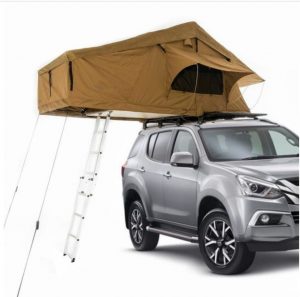
Throwing Some Light On The Subject Of Lights
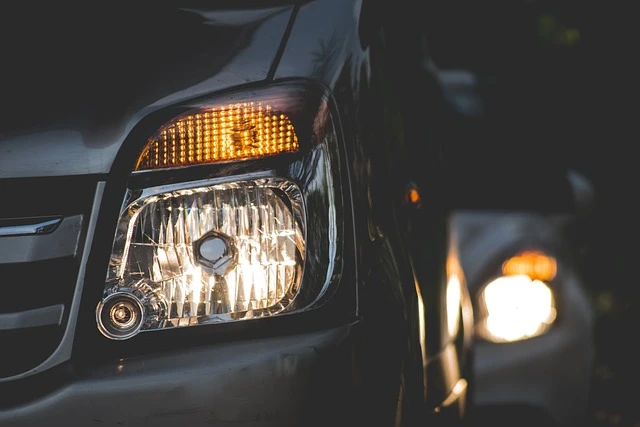
Once upon a time, cars were fitted with carbide lights, practically identical to the sort old-school miners wore on their helmets. These had to be lit with a match, a cigarette lighter or, if you were lucky, a built in flint and steel striking mechanism. They weren’t in the business long, as electric lights were put on cars in around 1912 or so. We’ve certainly come a long way since then and we’ve got more than a pair of carbide lanterns. If you’ve thought about adding some aftermarket tweaks to your vehicle, lights are some of the first things that we can try adjusting or adding. However, it pays to know what you’re talking about, so let’s look at what’s what.
Headlights
These are your bread and butter basics. They are there to stop you running into things at night and see where the road goes. They probably don’t need any introduction, but we’ll touch on them briefly. They are at the front and they’re white. The idea is that they illuminate as far as possible when on full beam and are dipped when another vehicle comes the other way. We know how they work. However, please remember the following: (1) you turn them on when there’s not enough light to see a person in dark clothing 100 m away, i.e., when the sun is below the horizon; (2) don’t play Headlight Chicken where you see who dips first.
Auxiliary Lights
Auxiliary lights are the ones that aren’t the bog-standard headlights, indicators and taillights. Not all cars have them when they roll off the factory floor, but many of them can be fitted as after-market mods. They’re particularly popular on off-roading vehicles, and for good reason. If you’re going out into the middle of nowhere, you really need to see all the rocks, holes and wandering animals, so more lights are needed (doubly so if you go spotlighting for rabbits).
Let’s have a look at the different sorts and what they’re for.
Fog Lights
Fog lights are for moments when something’s blurring visibility rather than for when it’s dark. Fog lights tend to keep the beam of light low so that it lights up the road but doesn’t hit the fog or dust and make the problem worse. If the light hits the dust or fog, then it will be scattered and make visibility worse.
Fog lights can be either amber or white. They have to turn off and on separately from the headlights. You’re not supposed to use them at night time as auxiliary lights, and you’re not supposed to use them at all unless the conditions warrant it.
Daytime Running Lights
Daytime running lights, commonly abbreviated DRLs, are lights fitted to the front of a vehicle that aren’t there so the driver can see but so that they can be seen. They’re supposed to be wired so that they go off when the headlights go on (unless you’re flashing your headlights temporarily to alert another driver about something, like the fact that their boot is open).
In some places, DRLs are required by law on all new vehicles. I’m not sure whether I agree with this or not. Certainly, out on the open road on an overcast day, DRLs have alerted me to a grey car on a grey road under a grey sky that would otherwise be hard to pick. However, around town, when every vehicle has DRLs and everything around them seems to have lights or at least be reflective, DRLs fall victim to the “if everyone’s special, then nobody’s special” syndrome and they don’t act as a warning of the presence of another vehicle more than the big metal box on wheels they’re mounted on.
Additional Driving Lights
Additional driving lights are like your headlights but they’re in addition to your headlights. Instead of having two headlights (or, in quite a few cases, four), you can have four (or six). Because they’re not as sophisticated as your main headlights, they only come on when the headlights are on high beam and should go off when you dip the headlights. This is for the simple reason that these auxiliary lights can’t dip, so if they stayed on, they’d dazzle the oncoming driver. They are sometimes called spotlights or spots.
The exact laws about where you can install additional driving lights vary slightly from state to state and they seem to be updated all the time. The general idea is that you are supposed to install them symmetrically about the centre of the vehicle’s bumper and that you can’t put them somewhere that could be dangerous, either because they protrude like horns or because they block the driver’s vision or dazzle the driver. In general, if you put lights on the front of your 4×4 so that they are surrounded by the bull bars rather than sticking out from them in front or on the side, you’re all good.
Light bars are a subcategory of additional driving light. Light bars are made up of a strip of LED lights, all acting in tandem. Legally, they are considered to be one light if they all turn on and off at the same time; if different bits turn on and off at different times, each bit of the light bar is considered to be a separate light. As lights must be mounted symmetrically around the front of the car, you can have a single light bar in the front and centre of your vehicle.
The ultimate in auxiliary lights or spotlights is the roof-mounted rack of lights that you’ll see on some 4x4s and are popular with hunters going out after dark. These are not legal in all states of Australia under all circumstances, with some states allowing them for use by hunting or when the vehicle is stationary or when the vehicle is off-road. These rules also seem to be updated every time you turn around, so check what applies to you before going to the effort and expense of buying or fitting them.
Puddle lights
The sole purpose of a puddle light is to cast a patch of light on the ground beside the door – very useful if you don’t want to put your best shoes into a puddle or a pile of dog poo. Some of the cars that have them as standard have a clever design so as well as throwing a patch of light onto the ground, it can also throw down a logo as a shadow – or even a patch of light thanks to LED tech. Aftermarket puddle lights are also out there, some of which have some quite quirky styles.
Kei Cars: The Little Cars That Can
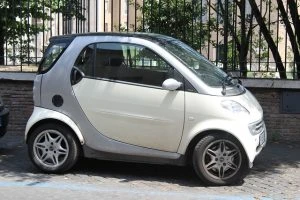
In the Western world, cars seem to have been getting bigger. For example, my early 2000 Volvo S70, a generous sedan when it came out, is shorter than the more modern “little” hatchbacks in the supermarket car park beside it. However, this isn’t the case around the world. In Japan, congestion is a problem in busy cities such as Tokyo and Kyoto, so one of the solutions was to introduce what are known as kei cars, also known as compact cars. Some people call these K-cars, as this is approximately the way the word “kei” is pronounced.
The concept of kei cars isn’t new; in fact, the Japanese government introduced the general idea and legislation related to these vehicles in the late 1940s as part of the post-WWII recovery efforts. Back then, it was more about encouraging car ownership and stimulating the local automotive industry (and you can see for yourself how well that worked, given the number of Japanese makes on Australia’s roads). Today, however, it’s more about congestion and fuel consumption.
What is a kei car? As the Japanese name suggests (in full, it’s kei-jidōsha), it’s a small car. Specifically, it’s one that has restrictions on its size, both in terms of its dimensions and its engine displacement. To qualify as a kei car, an automobile has to be no taller than 2 metres, no wider than 1.45 metres and no longer than 3.4 metres. In terms of engine displacement, the maximum allowed is 660 cc. There’s no official limit on engine power, but it’s very unusual for a factory kei car to have more than 47 kW. Not that tuning and tweaking to get a bit more power is out of the question for those interested… Most of them are speed-limited to 140 km/h, which makes sense, given that these are designed for crowded city streets, not open road rural running. The width means that they don’t handle quite as well at high speeds, so that’s another reason why their top speed isn’t as high as what you’d find with the average Toyota Corolla.
Needless to say, electric kei cars are out there as well.
To encourage the adoption of kei cars, the Japanese government has a few incentives set up. If a car qualifies to have the distinctive yellow kei plates, it’s exempt from the need to buy parking space (apparently, to buy a car in Japan, you first have to buy street space to park it). Various on-road taxes are reduced with kei cars, as these taxes are based on things such as the engine displacement and the weight.
Now, we all know that where there are large numbers of people, there are houses to fix and goods to be transported, which require vans and trucks. Your typical kei car has the sort of cargo space that would suit a minimalist (Marie Kondo would love these, if she doesn’t already). However, kei vans and kei trucks are a thing – although we’d call latter kei utes, as they’re “pickup truck” rather than a miniature version of a big old Scania. The kei vans or microvans are allowed to be taller than the kei cars, which allows the to carry more of a load and has earned them the nickname of “miàn bāo chē” (meaning “bread loaf cars” in nearby China. The kei trucks have the same basic wheelbase but a cab-chassis layout.
Because of their low fuel consumption, suitability for urban settings, kei cars and their relatives are growing in popularity in other parts of the world outside Japan. Their general cuteness relates to another Japanese concept, namely the kawaii (cute) aesthetic. Although many customers in Australia are leery about very small cars, given that physics says that they’re not going to come off well in a collision with an SUV, some popular kei marks are found in the Aussie market. Do any of these sound familiar?
- Suzuki Alto
- Suzuki Jimny
- Misubishi i-Miev
- Smart ForTwo (this one is unusual, as it’s a kei car that’s not from a Japanese marque).
These are all “regular” cars that meet the criteria for kei cars that you can find down at your local dealer (which is why we have them in our reviews page). Plenty of people also arrange for private imports of popular kei cars such as various Daihatsu models, the stylish Honda Beat coupe convertible, the Suzuki Every van, the Toyota Copen sports car and the Subaru Sambar, just to name a few. There’s even a kei version of the Mitsubishi Pajero, the Pajero Mini.